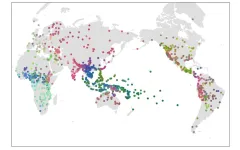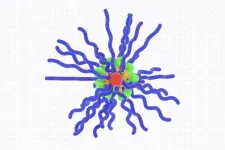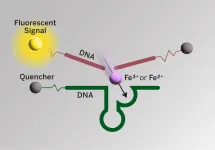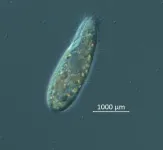(Press-News.org) Surgery to relieve leg pain and disability in some people with sciatica may be better than other non-surgical treatments, but the benefits are short-lived, lasting only up to 12 months, finds an analysis of the latest evidence published by The BMJ today.
What’s more, the certainty of available evidence is low to very low, prompting the researchers to suggest that surgery might only be a worthwhile option for people who feel that the rapid relief outweighs the costs and potential risks associated with surgery.
Sciatica refers to pain that travels along the path of the sciatic nerve, from the lower back and down the leg. In some people, sciatica occurs when a herniated (“slipped”) disk puts pressure on or irritates the small roots of the nerve in the back.
Guidelines recommend surgery (discectomy) when non-surgical options such as drugs or steroid injections are unsuccessful. And while surgery is widely used, evidence for its use is still uncertain and recent reviews on this topic have several shortcomings.
So an international team of researchers set out to investigate the effectiveness and safety of surgery compared with non-surgical treatment for sciatica.
They searched databases for randomised controlled trials comparing any surgical treatment with non-surgical treatment, epidural steroid injections, or placebo or sham surgery, in people with sciatica of any duration due to a herniated disk.
Pain and disability scores from the trials were converted to a 0-100 point scale, and risk of bias and certainty of evidence were assessed using recognised tools.
Trial follow-up times were split into immediate term (6 weeks or less), short term (between 6 weeks and 3 months), medium term (between 3 and 12 months), and long term (12 months).
A total of 24 trials were included in the main analysis, half of these looked at the effectiveness of discectomy compared with non-surgical treatment or epidural steroid injections (1,711 participants).
Very low to low certainty evidence showed that discectomy, compared with non-surgical treatment, reduced leg pain. The effect size was moderate at immediate and short term (average of around 12 points lower on the pain scale), small at medium term (6.5 points lower), and negligible at long term (2.3 points lower).
For disability, small, negligible, or no effects were found.
A similar effect on leg pain was found when comparing discectomy with epidural steroid injections. For disability, a moderate effect was found at short term, but no effect was observed at medium and long term.
The risk of any adverse events, such as wound infection, repeat disc herniation, and persistent postsurgical pain, was similar between discectomy and non-surgical treatment.
This review provides the most comprehensive synthesis of the evidence on surgical procedures for sciatica to date. But the researchers acknowledge that the certainty of evidence ranged from low to very low, that reporting of non-surgical treatments was generally poor, and that the included studies varied in the way they identified patients eligible for surgery which, alongside other limitations, may have affected the findings.
As such, they say generally, discectomy resulted in faster relief in pain and disability, but only up to 12 months - and might be considered an early management option in people in whom the benefits of early improvement in leg pain or disability outweigh the costs and potential risks.
In a linked editorial, researchers suggest that the conclusions from this review should be limited to people with sciatica who have not responded adequately to non-surgical approaches or have severe pain and who have a surgical indication on the MRI scan. Fortunately, the majority of people with sciatica recover spontaneously without the need for surgery.
The findings also highlight one of the main obstacles to improving outcomes in this clinical field - that sciatica is a heterogeneous condition and no routine clinical measures can consistently predict outcome, they note.
“Solving the heterogeneity puzzle is the key to helping people with sciatica and clinicians choose the right treatment for them earlier in the disease trajectory, while being fully informed of the benefits and risks of surgery,” they conclude.
END
Surgery for sciatica reduces leg pain and disability for some people, but benefits are short-lived
And the certainty of evidence supporting its use is low, say researchers
2023-04-19
ELSE PRESS RELEASES FROM THIS DATE:
Scientists discover cause of sea urchin die-offs in the Caribbean: a protozoan parasite
2023-04-19
The long-spined sea urchin Diadema antillarum is a keystone species. Coral reefs rely on healthy sea urchins to eat algae so coral can thrive. Healthy coral means healthy fish, and their positive impacts continue up the food chain.
In early 2022, long-spined sea urchins in St. Thomas began to quickly die in large numbers. Scientists rushed in to find the cause and have discovered that a microscopic parasite swarms the body and spines of the urchins, eating them alive.
The culprit, a microscopic organism called a scuticociliate, appears most similar to Philaster apodigitiformis, a type of protozoan parasite. It began decimating sea urchin populations around the Caribbean, ...
How opioid drugs get into our cells
2023-04-19
The human body naturally produces opioid-like substances, such as endorphins, which block the perception of pain and increase the feeling of well-being. Similarly, opioid drugs, including morphine or fentanyl, are widely used for alleviating severe pain. However, their use is associated with a high risk of dependence and addiction, and their excessive misuse causes over 350,000 annual deaths worldwide. Researchers from the University of Geneva (UNIGE) have compared the action of natural and therapeutic opioids. The latter penetrate inside the cells ...
Grambank shows the diversity of the world's languages
2023-04-19
Linguists have long been interested in language variation. What are common or universal patterns across languages? What limits the possible variation between them? Grambank, the world's largest and most comprehensive database of language structure, enables researchers to answer some of these questions.
Grambank was constructed in an international collaboration between the Max Planck institutes in Leipzig and Nijmegen, the Australian National University, the University of Auckland, Harvard University, ...
Nanoparticles provoke immune response against tumors but avoid side effects
2023-04-19
CAMBRIDGE, MA — Cancer drugs that stimulate the body’s immune system to attack tumors are a promising way to treat many types of cancer. However, some of these drugs produce too much systemic inflammation when delivered intravenously, making them harmful to use in patients.
MIT researchers have now come up with a possible way to get around that obstacle. In a new study, they showed that when immunostimulatory prodrugs — inactive drugs that require activation in the body — are tuned for optimal activation timing, the drugs provoke the immune system to attack tumors without the side effects that occur when the ...
Informed by mechanics and computation, flexible bioelectronics can better conform to a curvy body
2023-04-19
MADISON – Today, foldable phones are ubiquitous. Now, using models that predict how well a flexible electronic device will conform to spherical surfaces, University of Wisconsin–Madison and University of Texas at Austin engineers could usher in a new era in which these bendy devices can integrate seamlessly with parts of the human body.
In the future, for example, a flexible bioelectronic artificial retina implanted in a person’s eyeball could help restore vision, or a smart contact lens could continuously sense glucose levels in ...
Killer heatwaves endanger India’s development
2023-04-19
Deadly heatwaves fuelled by climate change in 2022 made almost 90 percent of Indians more vulnerable to public health issues, food shortages and increased risks of death, a new study from researchers at the University of Cambridge reported in PLOS Climate.
India currently uses a national Climate Vulnerability Indicator (CVI) to measure climate vulnerability and make plans for adaptation. The CVI includes many different socioeconomic, biophysical, institutional, and infrastructural factors. But it doesn't ...
Newfound link between Alzheimer’s and iron could lead to new medical interventions
2023-04-19
There is a growing body of evidence that iron in the brain may play a role in Alzheimer’s disease. Lending weight to that idea, a new imaging probe has for the first time shown that in the same regions of the brain where the amyloid beta plaques associated with Alzheimer’s occur, there is also an increase in iron redox, meaning the iron in these regions is more reactive in the presence of oxygen. Their imaging probe could yield even more details about the causes of Alzheimer’s and help in the search for new drugs to treat it.
A ...
Scientists identify 2022 sea urchin killer
2023-04-19
TAMPA, Fla. (APRIL 19, 2023) – The search for the 2022 killer that decimated the long-spined sea urchin population in the Caribbean and along Florida’s east coast is over. A team of researchers organized by Mya Breitbart, Distinguished University Professor at the University of South Florida’s College of Marine Science, identified a single-celled organism called a ciliate as the cause of a massive die-off event to a marine animal vital to coral reef health.
Their findings were reported in Science Advances.
“We’re beyond ...
How the pandemic exacerbated racial inequalities in the US criminal legal system
2023-04-19
APRIL 19, 2023
As Covid roared through prisons in 2020, the U.S. prison population fell by as much as 30 percent, creating the largest, fastest reduction in prison population in American history. But this decarceration disproportionately benefited white incarcerated people, sharply increasing the fraction of incarcerated Black and Latino people. A new study in Nature shows that this increased racial disparity in U.S. prisons stems in large part from a long-standing problem with the justice system: Non-white people tend ...
MD Anderson Research Highlights for April 19, 2023
2023-04-19
HOUSTON ― The University of Texas MD Anderson Cancer Center’s Research Highlights showcases the latest breakthroughs in cancer care, research and prevention. These advances are made possible through seamless collaboration between MD Anderson’s world-leading clinicians and scientists, bringing discoveries from the lab to the clinic and back.
Recent developments include effective combination therapies for patients with BRAFV600E mutations, an approach to identify cancer biomarkers in extracellular vesicles, therapeutic strategies for improving ...
LAST 30 PRESS RELEASES:
How human interaction drove evolution to make bears less aggressive
National Poll: Few parents offer teens guidance on healthy eating during holiday season
Cannabis derivatives could provide new ovarian cancer treatments
Raising strong yeast as a petroleum substitute
Clues to the origin of hot Jupiters hidden in their orbits
Canada’s reduced pledge to Global Fund will impact domestic health
1 in 4 children with major traumatic injuries not cared for in pediatric trauma centres
Duke and Duke-NUS’ joint cross-population research to uncover "East-West" differences in disease and care
Scientists to ‘spy’ on cancer- immune cell interactions using quantum technology breakthrough
Tech savvy users have most digital concerns
Making lighter work of calculating fluid and heat flow
Normalizing blood sugar can halve heart attack risk
Lowering blood sugar cuts heart attack risk in people with prediabetes
Study links genetic variants to risk of blinding eye disease in premature infants
Non-opioid ‘pain sponge’ therapy halts cartilage degeneration and relieves chronic pain
AI can pick up cultural values by mimicking how kids learn
China’s ecological redlines offer fast track to 30 x 30 global conservation goal
Invisible indoor threats: emerging household contaminants and their growing risks to human health
Adding antibody treatment to chemo boosts outcomes for children with rare cancer
Germline pathogenic variants among women without a history of breast cancer
Tanning beds triple melanoma risk, potentially causing broad DNA damage
Unique bond identified as key to viral infection speed
Indoor tanning makes youthful skin much older on a genetic level
Mouse model sheds new light on the causes and potential solutions to human GI problems linked to muscular dystrophy
The Journal of Nuclear Medicine ahead-of-print tip sheet: December 12, 2025
Smarter tools for peering into the microscopic world
Applications open for funding to conduct research in the Kinsey Institute archives
Global measure underestimates the severity of food insecurity
Child survivors of critical illness are missing out on timely follow up care
Risk-based vs annual breast cancer screening / the WISDOM randomized clinical trial
[Press-News.org] Surgery for sciatica reduces leg pain and disability for some people, but benefits are short-livedAnd the certainty of evidence supporting its use is low, say researchers





